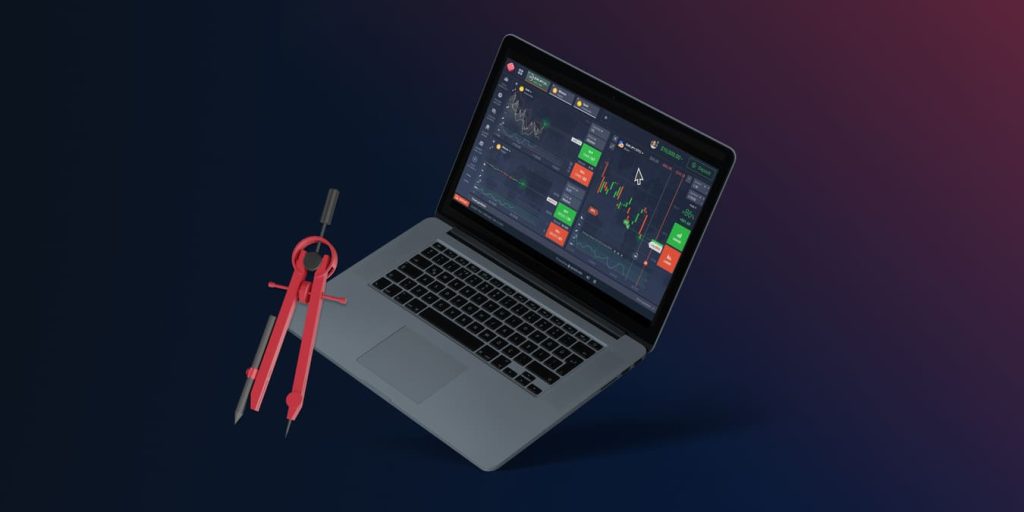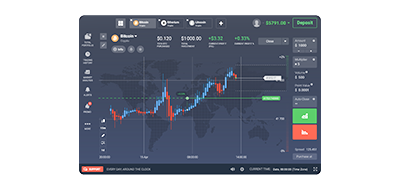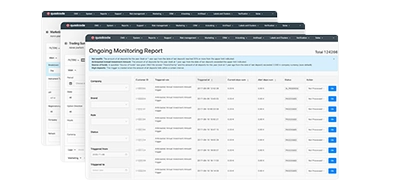Quay lại
Contents
Hiểu về giao dịch giấy: Cách thức hoạt động và tầm quan trọng của nó


Demetris Makrides
Senior Business Development Manager

Iva Kalatozishvili
Business Development Manager
Mô phỏng hoạt động giao dịch mà không cần tiền thật được gọi là giao dịch giấy, cho phép nhà đầu tư thử nghiệm các ý tưởng và chiến lược, đồng thời tích lũy kiến thức trên thị trường tài chính mà không phải chịu bất kỳ rủi ro tài chính nào. Ngay từ những bước đầu tiên, điều quan trọng cần nhận ra là giao dịch giấy mang đến một môi trường không rủi ro, nơi các giao dịch được thực hiện trên nền tảng ảo, phản ánh hoàn cảnh thị trường thực tế nhưng không cần cam kết đầu tư bằng tiền thật. Phương pháp này vô cùng hữu ích cho cả nhà giao dịch mới và dày dạn kinh nghiệm đang cố gắng trau dồi kỹ năng, tạo ra các chiến lược mới hoặc tìm hiểu về các thị trường khác.
Tại sao lại gọi là giao dịch giấy?
Thuật ngữ "giao dịch giấy" xuất phát từ phương pháp truyền thống mà trong đó các nhà giao dịch tiềm năng sẽ ghi lại các lệnh mua và bán giả định của họ trên giấy. Mọi người sẽ ghi lại các giao dịch tưởng tượng của mình và theo dõi hiệu suất theo thời gian để xem các lựa chọn của họ sẽ diễn ra như thế nào trên thị trường thực tế trước khi các nền tảng giao dịch điện tử ra đời. Thuật ngữ "giao dịch giấy" xuất phát từ khả năng tham gia thị trường một cách trí tuệ mà không phải chịu rủi ro tiền tệ thực tế. Đối với các giao dịch mô phỏng này, giấy hoạt động như một sổ cái cho phép các nhà giao dịch xem xét kết quả và điều chỉnh kế hoạch của họ.
Sự khác biệt giữa giao dịch và giao dịch giấy
Mặc dù cả giao dịch thực tế và giao dịch giấy đều liên quan đến các quyết định đầu tư dựa trên nghiên cứu thị trường, nhưng điểm khác biệt chính nằm ở việc sử dụng vốn thực tế. Trong giao dịch thực tế, nhà đầu tư sử dụng tiền thật để mua và bán tài sản tài chính; kết quả ngay lập tức thay đổi tình hình tài chính của họ thông qua lãi hoặc lỗ thực tế. Ngược lại, giao dịch giấy mô hình hóa các giao dịch bằng cách sử dụng tiền ảo. Lợi nhuận hoặc thua lỗ là giả định và không ảnh hưởng đến thu nhập thực tế của nhà giao dịch. Sự khác biệt này rất quan trọng vì giao dịch thực tế bao gồm các yếu tố tâm lý như sợ hãi, tham lam và căng thẳng của rủi ro tài chính, những điều có thể không được trải nghiệm đầy đủ trong giao dịch giấy; mức độ rủi ro về mặt cảm xúc là khác nhau. Do đó, mặc dù giao dịch giấy là một công cụ tuyệt vời để học hỏi và xây dựng chiến lược, nhưng nó không thể trang bị đầy đủ cho các nhà giao dịch đối phó với những yêu cầu về mặt cảm xúc khi tham gia thị trường thực tế.
Giao dịch giấy diễn ra như thế nào?
Thông thường, giao dịch giấy được thực hiện thông qua các hệ thống mô phỏng do các trang web tài chính hoặc công ty môi giới cung cấp. Người dùng thường bắt đầu với số vốn ảo được xác định trước, sau đó mở một tài khoản giao dịch giấy. Dữ liệu thị trường theo thời gian thực hoặc bị trì hoãn cho phép họ truy cập để theo dõi các thay đổi của thị trường và đưa ra những đánh giá sáng suốt. Giống như trong tài khoản thực, các nhà giao dịch có thể thực hiện các giao dịch ảo bằng cách chọn chứng khoán, khối lượng và loại lệnh. Theo dõi tất cả các giao dịch, nền tảng sẽ cập nhật danh mục đầu tư ảo để hiển thị lỗ và lãi tùy thuộc vào những thay đổi trên thị trường. Các công cụ phân tích kỹ thuật, công cụ biểu đồ và quyền truy cập vào một số loại tài sản—tất cả đều có thể được các nền tảng tiên tiến cung cấp—có thể giúp cải thiện tính chân thực và giá trị hướng dẫn của mô phỏng. Thông qua việc mô phỏng cẩn thận trải nghiệm giao dịch, giao dịch giấy cho phép người dùng trau dồi việc thực hiện lệnh, quản lý danh mục đầu tư và thực hiện chiến lược trong một môi trường được kiểm soát và không rủi ro.
Có rủi ro nào khi giao dịch giấy không?
Mặc dù không liên quan đến tiền thật, giao dịch giấy giúp giảm thiểu rủi ro tài chính; nhưng nó không hoàn toàn tránh khỏi các loại rủi ro khác. Sự mất kết nối cảm xúc tiềm ẩn đặt ra những vấn đề nghiêm trọng. Giao dịch bằng tiền ảo không thể tạo ra những phản ứng tâm lý tương tự như giao dịch bằng tiền thật, điều này sẽ dẫn đến sự tự tin thái quá hoặc thiếu sự tuân thủ các quy tắc quản lý rủi ro hợp lý. Các nhà giao dịch có thể chấp nhận những rủi ro mà họ thường không cân nhắc nếu có tiền thật, chẳng hạn như đòn bẩy quá mức hoặc bỏ qua lệnh dừng lỗ. Hơn nữa, một số điều kiện thị trường nhất định—chẳng hạn như sự trượt , các vấn đề thanh khoản, hoặc tác động của các lệnh lớn—có thể không được mô phỏng chính xác trong môi trường mô phỏng, do đó tạo ra kỳ vọng cao một cách phi thực tế trước khi bắt đầu giao dịch thực tế. Do đó, ngay cả khi không có rủi ro tài chính, khả năng tiếp thu các phương pháp giao dịch kém hoặc hiểu lầm về động lực thị trường vẫn còn. Để giảm thiểu những nguy cơ này, các nhà giao dịch nên tiếp cận giao dịch giấy với cùng một kỷ luật và sự nghiêm túc như khi giao dịch thực tế.
You may also like

Giao dịch giấy có phải là một hoạt động tốt không?
Cả người mới bắt đầu và nhà giao dịch giàu kinh nghiệm đều đồng ý rằng giao dịch giấy tờ đều mang lại lợi ích. Đối với các nhà giao dịch lần đầu, giao dịch giấy tờ mang đến cơ hội làm quen với cơ chế của các nền tảng giao dịch và tìm hiểu cách thị trường vận hành mà không bị ảnh hưởng bởi rủi ro tiền thật. Giao dịch giấy tờ giúp cá nhân tự tin hơn, phát triển kỹ thuật giao dịch và hiểu rõ hơn về hành vi thị trường. Giao dịch giấy tờ cung cấp một môi trường thử nghiệm cho các nhà giao dịch giàu kinh nghiệm để thử nghiệm những ý tưởng mới hoặc thích ứng với các xu hướng hiện tại trong bối cảnh thị trường luôn thay đổi. Giao dịch giấy tờ giúp họ cải thiện phương pháp và điều chỉnh trước khi áp dụng vào thực tế. Thông qua việc sử dụng chiến lược quản lý rủi ro Tương tự như kiểm soát khối lượng vị thế và lệnh dừng lỗ, các nhà giao dịch có thể phát triển những thói quen thiết yếu cho thành công trong giao dịch thực tế. Việc duy trì nhật ký giao dịch và tuân thủ các hướng dẫn trong chiến lược sẽ giúp các nhà giao dịch xử lý giao dịch mô phỏng với mức độ tận tâm và kỷ luật tương tự như giao dịch thực tế, từ đó tối ưu hóa lợi thế.
Lợi ích bổ sung của giao dịch giấy
Ngoài những lợi ích cơ bản của việc học các kỹ thuật giao dịch cơ bản và tạo ra các chiến lược ban đầu, giao dịch mô phỏng còn có nhiều lợi ích khác có thể cải thiện đáng kể năng lực và sự sẵn sàng của nhà giao dịch đối với các tình huống thị trường thực tế.
Một trong những lợi thế chính là khả năng tiếp cận nhiều thị trường và công cụ tài chính khác nhau. Cổ phiếu, trái phiếu, ngoại hối, hàng hóa , và thậm chí cả tiền điện tử cũng nằm trong số nhiều loại tài sản mà các nền tảng giao dịch giấy thường cung cấp. Sự đa dạng này cho phép các nhà giao dịch nghiên cứu và nắm bắt những đặc điểm riêng biệt của nhiều thị trường mà không phải chịu rủi ro thực tế về tiền mặt. Ví dụ, thị trường tiền tệ hoạt động 24/7 và chịu ảnh hưởng bởi các sự kiện kinh tế thế giới; hàng hóa có thể bị ảnh hưởng bởi các biến động theo mùa và căng thẳng địa chính trị. Thông qua việc thử nghiệm nhiều công cụ, các nhà giao dịch có thể mở rộng kiến thức, tìm ra thị trường phù hợp với phong cách giao dịch của mình và điều chỉnh chiến thuật cho phù hợp.
Cơ hội làm quen kỹ lưỡng với nhiều tính năng của nền tảng giao dịch cũng là một lợi ích quan trọng khác. Khả năng biểu đồ nâng cao, chỉ báo kỹ thuật, danh sách theo dõi tùy chỉnh và nhiều loại lệnh khác nhau—ví dụ: lệnh giới hạn, lệnh dừng lỗ và lệnh dừng lỗ—chỉ là một vài trong số các công cụ và tính năng mà các nền tảng giao dịch hiện đại cung cấp. Không cần lo lắng về những sai sót tốn kém, giao dịch giấy cho phép người dùng điều hướng kỹ lưỡng các tính năng này, thực hành thực hiện giao dịch và tìm hiểu cách thức hoạt động của các loại lệnh khác nhau. Vì các nhà giao dịch đã quen thuộc với các công cụ của nền tảng, kiến thức thực tế này giúp cải thiện hiệu quả và sự tự tin khi chuyển sang giao dịch trực tiếp.
Một yếu tố quan trọng của giao dịch giấy cũng là thường xuyên kiểm tra hiệu suất giao dịch mô phỏng. Thông qua việc ghi chép và phân tích cẩn thận các giao dịch, nhà giao dịch có thể tìm ra xu hướng trong quá trình ra quyết định, làm nổi bật những điểm mạnh cần phát triển và đánh dấu những điểm cần cải thiện. Vòng phản hồi liên tục này cho phép nhà giao dịch trau dồi chiến lược và thúc đẩy sự phát triển cá nhân. Ví dụ, một nhà giao dịch có thể nhận thấy xu hướng thoát lệnh nhanh chóng khỏi các vị thế đang thắng hoặc nắm giữ các giao dịch thua lỗ quá lâu. Hiểu được những hành vi này giúp nhà giao dịch điều chỉnh chiến lược, bao gồm việc xác định mức dừng lỗ và chốt lời hợp lý hơn.
Giao dịch giấy cũng là một kỹ thuật hiệu quả để kiểm tra lại các phương pháp dựa trên các hoàn cảnh thị trường trong quá khứ. Nhiều hệ thống cho phép người dùng sao chép các giao dịch dựa trên dữ liệu thị trường trước đó, do đó cung cấp thông tin chi tiết về cách một số chiến lược nhất định có thể hoạt động trong các chu kỳ thị trường khác nhau — thị trường tăng giá, thị trường giảm giá, hoặc thời kỳ biến động cực độ. Trước khi áp dụng một chiến lược vào thị trường thực tế, các nhà giao dịch có thể đánh giá độ tin cậy và khả năng phục hồi của nó thông qua phân tích hồi tố này. Việc biết được hiệu suất trong quá khứ của một kế hoạch giao dịch giúp người giao dịch xây dựng sự tự tin và nhấn mạnh những thay đổi cần thiết để tối đa hóa kết quả.
You may also like

Giao dịch giấy cũng cho phép các nhà giao dịch thử nghiệm nhiều kỹ thuật giao dịch và khung thời gian khác nhau. Cho dù là giao dịch trong ngày, giao dịch lướt sóng hay đầu tư dài hạn, mọi người có thể thử nghiệm nhiều chiến lược khác nhau để xem chiến lược nào phù hợp với mục tiêu, khả năng chịu rủi ro và lối sống của mình. Việc tạo ra một chiến lược giao dịch tùy chỉnh, bền vững và hiệu quả về lâu dài phụ thuộc vào quá trình thử nghiệm này.
Hơn nữa, giao dịch giấy giúp phát triển tính kỷ luật và tính kiên nhẫn - những phẩm chất cần thiết cho một giao dịch tốt. Không có áp lực tài chính thực sự, do đó các nhà giao dịch có thể tập trung vào việc tuân thủ các chiến lược và hướng dẫn giao dịch của mình mà không bị cám dỗ bởi cảm xúc mà giao dịch tiền thật có thể tạo ra. Các nhà giao dịch có nhiều khả năng áp dụng các hành vi kỷ luật vào hoạt động giao dịch thực tế của mình bằng cách củng cố chúng trong môi trường ảo.
Hơn nữa, giao dịch giấy có thể giúp tạo ra các cơ hội kết nối và học hỏi. Nhiều hệ thống có các yếu tố cộng đồng nơi các nhà giao dịch có thể trao đổi ý tưởng, thảo luận chiến thuật và cùng nhau phát triển. Việc tương tác với một cộng đồng những người cùng chí hướng có thể mang lại thêm nguồn cảm hứng, lời khuyên và sự khích lệ.
Hạn chế của giao dịch giấy
Mặc dù là một công cụ học tập tuyệt vời, giao dịch giấy có một số nhược điểm tự nhiên mà các nhà giao dịch phải thừa nhận. Đặc biệt liên quan đến trượt giá và thanh khoản, một hạn chế lớn là không thể tái tạo hoàn toàn các điều kiện thị trường thực tế. Đặc biệt trong các thị trường biến động nhanh hoặc ít thanh khoản, trượt giá khiến giá thực hiện trong giao dịch thực tế khác với giá dự đoán. Vì các hệ thống giao dịch giấy có thể không mô phỏng chính xác điều này, các nhà giao dịch có thể phóng đại mức độ thành công của các kỹ thuật của họ.
Hơn nữa, ảnh hưởng của các lệnh lớn thường không được thấy rõ trong giao dịch giấy. Trên thị trường thực tế, đặc biệt là ở những nơi thanh khoản thấp, việc đặt lệnh lớn có thể ảnh hưởng đến giá hàng hóa. Điều này thường không được xem xét trong giao dịch giấy, vì vậy các nhà giao dịch có thể kỳ vọng quá cao hoặc quá thấp một cách phi thực tế về tốc độ tham gia hoặc thoát khỏi vị thế ở mức giá mục tiêu.
Kỳ vọng thực tế phụ thuộc vào việc nhận thức được những hạn chế này. Trước khi chuyển sang giao dịch thực tế, các nhà giao dịch nên xem xét kỹ lưỡng kết quả giao dịch trên giấy tờ và thực hiện những thay đổi phù hợp trong chiến thuật của mình dựa trên những yếu tố này.
Các khía cạnh cảm xúc và tâm lý
Trải nghiệm cảm xúc và tâm lý giữa giao dịch giấy và giao dịch thực tế là một trong những khác biệt đáng kể nhất. Trong giao dịch giấy, việc thiếu rủi ro tài chính thực tế dẫn đến việc giảm đáng kể hoặc hoàn toàn không có những cảm xúc như lo lắng, sợ hãi và tham lam. Điều này có thể dẫn đến một môi trường giao dịch mà trong đó các phán đoán chỉ được đưa ra dựa trên phân tích lý trí, không bị ảnh hưởng bởi thiên kiến cảm xúc.
Tuy nhiên, khi giao dịch bằng tiền thật, các nhà giao dịch có thể phản ứng mạnh mẽ theo cảm xúc, điều này có thể ảnh hưởng đến quá trình ra quyết định của họ. Nỗi sợ thua lỗ có thể khiến các nhà giao dịch tránh xa các thiết lập giao dịch hợp lý hoặc thoát khỏi các vị thế ngay từ đầu. Mặt khác, lòng tham có thể dẫn đến việc giao dịch quá mức hoặc bám víu vào các vị thế thành công quá lâu với hy vọng kiếm thêm lợi nhuận, do đó có thể dẫn đến thua lỗ.
Căng thẳng và áp lực liên quan đến giao dịch thực tế cũng có thể ảnh hưởng đến khả năng bám sát chiến lược giao dịch của nhà giao dịch. Kỷ luật cảm xúc đóng vai trò quan trọng trong việc duy trì lợi nhuận. Nhà giao dịch có thể rời xa chiến lược của mình do lo sợ trước những biến động mạnh của thị trường hoặc trở nên quá tự tin sau một loạt giao dịch tốt.
Các nhà giao dịch nên nuôi dưỡng thái độ đúng đắn và khả năng phục hồi cảm xúc nếu muốn thu hẹp khoảng cách này. Việc quản lý cảm xúc hiệu quả có thể đạt được bằng cách sử dụng các kỹ thuật chánh niệm, ghi nhật ký giao dịch để theo dõi các phản ứng cảm xúc và áp dụng các nguyên tắc kiểm soát rủi ro nghiêm ngặt. Giao dịch thực tế giúp các nhà giao dịch quản lý tốt hơn các vấn đề cảm xúc vì nó thừa nhận rằng chúng là điều không thể tránh khỏi trong công việc của họ, từ trên giấy tờ đến thị trường thực tế.
Phần kết luận
Giao dịch giấy mang đến một môi trường giao dịch không rủi ro để học hỏi, thực hành và trau dồi kỹ năng giao dịch, do đó bất kỳ ai quan tâm đến thị trường tài chính đều sẽ được hưởng lợi rất nhiều từ nó. Bằng cách sử dụng mô phỏng thị trường thực tế, các nhà giao dịch có thể xây dựng chiến thuật, tự tin hơn và nắm bắt được diễn biến thị trường mà không phải lo lắng về việc mất tiền. Mặc dù việc xử lý giao dịch giấy một cách kỷ luật và nghiêm túc có thể giúp tăng cường đáng kể sự chuẩn bị cho việc tham gia thị trường chủ động, nhưng nó không thể tái tạo hoàn toàn trải nghiệm cảm xúc khi giao dịch bằng tiền thật.
FAQ
Vì giao dịch giấy bao gồm các giao dịch mô phỏng sử dụng tiền ảo nên bạn không thể kiếm được tiền thật từ giao dịch này; mọi khoản lãi hoặc lỗ đều chỉ là giả định và không chuyển thành lợi ích tài chính thực tế.
Trên thực tế, giao dịch giấy là hợp pháp và được chấp thuận rộng rãi như một cách hợp lý để mọi người thử nghiệm các kỹ thuật và thực hành giao dịch mà không cần tiền thật.
Bắt đầu với giao dịch giấy là một quyết định sáng suốt cho người mới bắt đầu vì nó cho phép bạn nghiên cứu các kỹ thuật giao dịch, tạo ra các chiến lược và tích lũy kinh nghiệm mà không cần mạo hiểm với tiền thật.
Vì nhiều công ty môi giới và trang web tài chính cung cấp tài khoản giao dịch mô phỏng miễn phí để khách hàng thực hành mà không phải chịu rủi ro về vốn thực tế, nên giao dịch giấy thường không tốn phí. Tuy nhiên, một số nền tảng có thể tính phí đăng ký hoặc phí cho các dịch vụ bổ sung; vì vậy, điều quan trọng là phải tìm hiểu kỹ các chi phí liên quan từ nhà cung cấp cụ thể.
Đã cập nhật:
19 tháng 12, 2024





